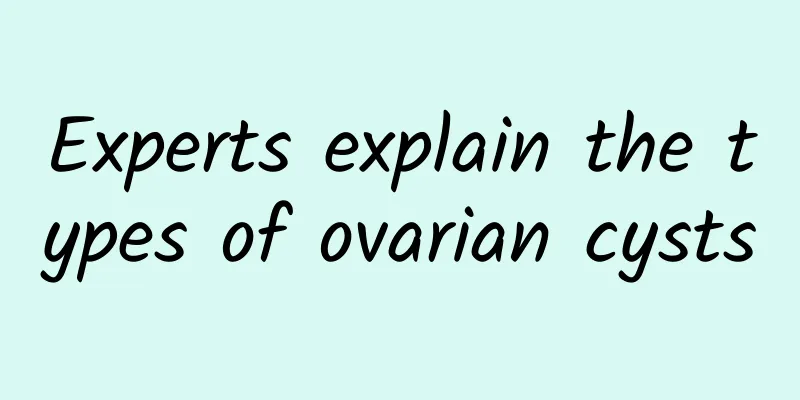What is the cause of left ovarian cysts and who are the susceptible groups?

|
Left ovarian cyst is one of the common gynecological diseases. Knowing the cause can help prevent it better. So, what is the cause of left ovarian cyst? Who is the susceptible population? There are many reasons for ovarian cysts, including the following factors: 1. Environmental and lifestyle factors: food contamination, such as plant growth hormones in vegetables, and clenbuterol in livestock and poultry formula. 2. Endocrine factors: Although the ovaries are small, they are important organs for egg production and ovulation, endocrine hormones, and endocrine balance. Ovarian tumors often occur during the reproductive age when endocrine function is active. 3. Genetic factors: About 20% to 40% of patients with ovarian cysts have a family history. The patient's mother, aunt, grandmother and other relatives all have ovarian cysts, so the probability of suffering from ovarian cysts is relatively high. People who are prone to left ovarian cysts include: 1. Infertile women do not breastfeed. Unmarried women, non-pregnant women and non-breastfeeding women. Studies have shown that ovarian cancer is likely to occur during the unmarried and non-pregnant period. The longer the infertility period, the greater the risk. The infertility period is 15 years. In the above case, the risk of ovarian cancer increases significantly. Pregnancy can reduce the risk of ovarian cancer. The more pregnancies and cumulative pregnancy months, the lower the risk of ovarian cancer. 2. Genetic factors, family history of cancer in women. Ovarian cancer tends to cluster in families, and a family history of ovarian cancer is a high-risk factor for ovarian cancer. A family history of breast cancer, endometrial cancer, and rectal cancer is also a risk factor for ovarian cancer. 3. Women have early menstruation and late menopause. Women have early menstruation and late menopause. Studies have shown that the more ovulation cycles a woman has in her lifetime, the greater her risk of ovarian cancer. 4. Women who are exposed to talcum powder, asbestos and benzene chemicals. Experimental studies have shown that the moonlight in front of the bed is ground cream. Talcum powder and asbestos can move into the abdominal cavity through the vagina, causing atypical hyperplasia of the ovarian epithelium, thereby increasing the risk of ovarian cancer. |
<<: What to do if you have premature ovarian failure at the age of 19
>>: How to treat multiple uterine fibroids best
Recommend
How to relieve pelvic effusion and low back pain
Pelvic effusion is divided into physiological and...
What is the best way to diagnose Bartholinitis?
Bartholin's gland cyst is caused by inflammat...
How to choose various surgical methods for uterine fibroids
Surgery is a traditional and effective method for...
What can I eat to temporarily inhibit the growth of uterine fibroids? What medicine can I take to inhibit the growth of uterine fibroids?
What can I eat to temporarily inhibit the growth ...
It is best for patients with ectopic pregnancy to undergo routine examinations in advance
Nowadays, due to the erosion of sexual life, many...
How to prevent the recurrence of hyperprolactinemia
Hyperprolactinemia is a common disease in life. T...
What are the diagnostic criteria for pelvic peritonitis?
Everyone is aware of the disease of pelvic perito...
Introduction to the Cervical Precancer Hospital
How to find the best hospital for treating cervic...
Is banana milk effective for weight loss? Nutritionist: Don’t touch these landmines
There has been an oversupply of bananas recently....
What drugs should women avoid during menstruation?
Women should often encounter such a situation: wh...
What are the main harms of irregular menstruation to women?
What are the main harms of irregular menstruation...
What preparations and checks are needed before abortion?
Before artificial abortion (abbreviated as induce...
How to care for menopausal patients in daily life
Menopause is a normal physiological phenomenon. O...
What are the symptoms of cervical erosion of degree 2 in women? The main symptoms of cervical erosion of degree 2 in women
Symptoms of cervical erosion of degree 2. Cervica...
What are the things to check before abortion?
The best way to deal with an unexpected pregnancy...









